Welcome to the first installment of Sentinels of Sport, here on The House blog. Throughout this series, we’ll be honoring heroes in the history of snowboarding, skiing, skating and more. What better way to kick it off than with the granddaddy of snowboarding, Jake Burton Carpenter.
One of the first things you’ll notice at any board shop is the plethora of snowboard and apparel brands. But amidst the noise, there is always one brand that everyone can recognize: Burton. The signature mountain logo is the symbol of a man who gave everything to a sport he loved. From pioneering a multi-million dollar industry to fighting for his life, Jake Burton Carpenter has seen all the highs and lows that life has to offer.
Part I: Life on Long Island
“I sort of turned things around and decided I really didn’t want to be an underachiever for the rest of my life.”
Born on April 29th, 1954, Jake Burton Carpenter grew up like any other kid in Cedarhurst, NY on Long Island. Life was an adventure and presented all kinds of opportunities for trouble
His origins were modest, and his family classically American. “It was a middle-class deal. I lived in a relatively small, modest house. We weren’t rich, but we weren’t poor — pretty much somewhere in the middle. Cedarhurst was a cool little town, kind of surrounded by ghetto, but it was a cool spot right next to the ocean.”
Jake spent many of his days hanging out the beach — be it swimming or body-surfing. Somehow, he always had a knack for getting into trouble.
“I was basically a f*ck-off as a kid. I started to learn how to beat the system at a very young age and took pride in that. My role models were f*ck-offs, and I was following in their footsteps. I was smoking cigarettes and smoking dope and f*cking around, just doing the bare minimum in classes.”
It was this independent spirit that drove him in his youth, and in some ways still drives him today. Spurred by the death of his older brother when he was just 12 years old and the loss of his mother to Leukemia not long after, Jake removed himself from close relationships.
“… when he died it was like watching this tragedy rock my family, and my mother and I were really tight. Dealing with all that shit at that age made me very independent. […] I’ve got great friends, but it seems I like to operate with a certain level of independence.”
His independent spirit followed him throughout his youth.
In the late 60’s, he was enrolled his freshman year of highschool at Brooks School, a private boarding school in North Andover that both his father and brother had attended. For helping some upperclassmen finish the yearbook, Jake was paid with a key for every lock in the school. One can only imagine the power that a misfit from Cedarhurst was wielding. As the janitors were cleaning the building one evening, they stumbled upon the keys in Jake’s possession. To his father’s disappointment, Jake was formally expelled from the school. In hindsight, however, it was a pivotal moment in his young life.
“… my dad put the fear of God in me, and I flipped a switch. All of a sudden I had the best grades in my class and I became the valedictorian.”
Along the way, Jake had been casually introduced to winter sports — originally skiing. On a family trip to Bromley, a small mountain in Vermont, he got hooked on skiing. The excitement and speed of the sport caught his attention, and the freedom of the mountain stoked his independent mind. He became so enthralled with the sport that he claims he was “the best skier in my town on Long Island.” – Burton After getting expelled from Brooks School, Jake ended up at The Marvelwood School in Connecticut where he competed for the ski team.
But underlying his passion for the slopes, was a persistent desire for surfing.
While working odd jobs and saving money, Jake came across the infamous snurfer the unequivocal grandfather of snowboarding. Invented by Sherman Poppen on Christmas day in 1965, the snurfer was a monoski, featuring a wide build and no bindings with a lanyard for control and ridden sideways like snowboards that followed it. Aptly named by Popper’s wife Nancy, the snurfer allowed the rider “surf” on the snow. Considering Jake’s love for the mountain, it was a match made in heaven. Not to mention it was pretty cheap ($10-$15).
“We’d get high and go out on the local sledding hill and ride snurfers straight down. It was rodeo type thing. Just fourteen or fifteen years old, bombing down and taking horrendous wipes.”
After leaving The Marvelwood School in the early 70’s for an independent study program in his last semester as a senior, Jake started a landscaping business with a friend and thus began sowing the seeds of his entrepreneurship. Soon after, Jake moved out west and enrolled at the University of Colorado-Boulder to study economics and hopefully join the ski team. All the while, he was dreaming of the snurfer and the possibilities it could offer. But the combination of a car accident and generally being in over his head, Jake’s time out west was short-lived. He moved back east and started taking night-classes at New York University, and started working for Victor Niederhoffer who managed an investment banking firm. It was here that Carpenter began to realize his vision for snowboarding.
“I was talking to all these successful entrepreneurs and realized that it’s not impossible to get a business going. […] I was like, ‘Shit, I could’ve done that.’”
Part II: A Rising Tide
“Well, shit man, I can start a snowboarding company and I can get rich.”
After being forced to take more than he wanted at the investment firm, Carpenter set out to make his dream of snowboarding a reality. With $20,000 in his bank account and a passion for the slopes, Carpenter set out to Stratton, Vermont where he worked part-time as a bartender and experimented with prototypes for his first snowboard.
From Ash and marine plywood to fiberglass and surfboard foam, he worked tirelessly to find the perfect materials for his first board — finally settling on horizontally laminated wood. Having built a reliable prototype, Carpenter set up a factory in a barn in Londonderry, Vermont and, with the hired help of two relatives and a friend, began building up to 50 boards a day. By 1977, Burton Snowboards was off and running.
The boards were introduced at a sports-goods trade show in the fall of 1978, where Carpenter emerged with a whopping two sales. He refused to back down, however, and continued to manufacture boards at a rate of 50 per day. He was convinced that if he built the boards, the riders would come. But in two years time, he had only sold 300 boards at $30 or $40 each and was nearly $100,000 in debt. Something wasn’t working and Carpenter needed to change.
“I realized that I had to sell the sport as much as the board… Once I focused on marketing the sport, things really changed around.”
Initially, snowboarders were not allowed in ski resorts, and either had to do ride illegally without the owners knowing, which Jake Carpenter certainly did, or they had to ski down the backside of the mountain — riding backhill as it’s known. In fact, one of Burton’s first boards, released in 1979, was conveniently named the Backhill Snowboard, a constant reminder of where snowboarders belonged in the world of winter sports.
To help sell the sport, Burton and his team started taking their boards out on ski resorts and anywhere else they could get an audience. Burton’s first major breakthrough came in 1977 at Stratton Mountain in Vermont, when Paul Johnston, the manager at the time, let Carpenter and his crew ride the hill alongside skiers. This gave them the platform they needed to start marketing the sport at a higher level. Over time, it became easier for ski resorts to accept snowboarders, as lift-ticket sales for snowboarders increased at resorts where they were allowed. Still, resorts were reluctant to allow snowboarders and if they did the riders were required to register and get certified.
“It was gnarly, and all that shit we got for it was so undeserving.”
By 1985, only 5% of ski resorts allowed snowboarding. There were many in the industry who had their doubts about the future of the sport. Mark Gabriel, publisher and editor of Sports Ink Magazine in 1988 noted that,
“Snowboarding is small and I’d love to see it explode — but I’m not sure it’s going to be as big as the industry would like to think. I’m just not convinced that snowboarding, even though it’s getting bigger and bigger, is getting that much beyond the young market.” – Mark Gabriel, publisher and editor of Sports Ink Magazine, 1988
Fortunately for Burton and company, there was yet another breakthrough just around the corner. In 1987, Stratton mountain released a report that found that snowboarders had purchased more than $250,000 in lift tickets to snowboarders alone. Other resorts took notice and quickly began to open their doors for the rising tide of shredders.
“We used to print areas where snowboarders were allowed. Now [ten years later], though, it’s easier to make a list of the areas where we’re not allowed. Stratton really gave us the boost.”
Another tool Jake Carpenter used was starting a U.S Open for snowboarding to help legitimize the sport. The first U.S Open took place in 1983 in Snow Valley, Vermont. Similar to snurfing contests in prior years, the U.S Open in Snowboarding allowed the best boarders an opportunity to flash their skills to the whole country. The event garnered attention from national media outlets like NBC’s Today Show and Sports Illustrated.
As with any good thing, it’s not long before others want a piece of the pie and Jake Burton Carpenter had to prepare to defend his creation.
Part III: Rivals
“Snowboards are hot, very hot. They’re exciting, and they’re certainly beyond just being a fad.” – David Ingemie, president of Ski Industries America 1988
Right from the get-go there were individuals who saw that Carpenter was on to something. Most famously was Tom Sims. Tom Sims had his start in the skateboarding industry before snowboarding arrived on the scene. Carpenter met Sims at a show in New York in 1977, recalling their first interaction as casual if not a little passive-aggressive.
“I had snowboards, and he was like, ‘Oh yeah, I used to do this in highschool.’ I was like, ‘Okay, whatever.’ Next thing you know he licensed the patent for a snowboard from Weber and bought Weber’s inventory. […] there was not a snowboard in his booth whatsoever. Then a year later he was claiming he invented the sport! I was like, ‘Okay, this is war.’”
And war it was, as the two traded blows throughout the rest of the decade. That was until Carpenter acquired the “Godfather of Free-riding,” Craig Kelly from Sims. Sims’ brand was struggling and was consequently sold to Vision. Kelly was riding for Sims, but was informed after the sale that his contract was useless. Carpenter jumped on the opportunity.
“Craig and I were buddies, and I always said, ‘Hey, if things ever don’t work out with Sims, we would love to have you.’”
Kelly called and the rest was history. He signed with Burton $17,000 a year, which was the largest contract of its kind at the time. Carpenter understands the significance that both Sims and Kelly have had on his business and the sport as a whole.
“God bless the dead, but without Tom Sims to compete with in every sense, and vice versa, snowboarding wouldn’t be where it is today.”
Of Craig Kelly, he says, “Craig was a real-game changer. […] He got in there and taught me how to listen. He just straightened me out. We were good friends, and right up the day he died we had so much respect for each other and love.” – Burton 2016 “Whether he was alive or dead, Craig Kelly has always shown me the way.”
In 1988, ski companies like Rossignol and K2 got involved in snowboarding, releasing boards of their own. They have been competing ever since, but Carpenter remains surprised that it took them so long anyway.
“It’s incredible to me that they [ski companies] were that asleep at the switch.”
Burton Snowboards had established itself as the dominant power in snowboarding, and there was no taking that from them.
Part IV: The Sun Never Sets in the Burton Empire
“Choose an industry with a lifestyle that you can become passionate about and don’t ever consider giving up”
In 1985, Jake Carpenter and his wife Donna took a trip to Innsbruck, Austria to visit a contact and learn about how they might implement ski technology into their boards. Amazed by the manufacturing of the skis and urged by Donna, Carpenter established a high-tech manufacturing facility there. Not long after, he moved Burton’s main facility in the U.S to Burlington, Vermont where it resides today. Just two years later in 1995, the company expanded into Japan.
The timing couldn’t have been more perfect, as the 1998 Olympics were to be held in Nagano, Japan, and were the first games to feature snowboarding as an event. This provided unprecedented international exposure for the sport, Burton and, most importantly, to the riders. Burton understands the significance of the addition of the sport into the Olympic games, but downplays it a little,
“It’s not as big a deal as most people outside our sport tend to believe. Snowboarding is not a sport that was ‘made’ by the Olympics, and it seems to have little impact on the core of our sport. […] For those riders who choose to participate in the Olympics, they represent a huge opportunity. The mainstream exposure that comes along with an Olympic title is huge, and no one deserves that more than the riders who are going through the process of qualifying and competing in the Olympics.”
By 2003, foreign sales accounted for 60% of volume according to the company. Burton now stands as the biggest, most powerful and influential brand in the sport. As of 2018, Snowboarding is a $400 million industry and Burton owns nearly half of it. To say that Carpenter achieved what he set out to achieve is an understatement. The company continues to sponsor the best riders in the world, including talents such as Shaun White, Terje Haakonsen, Mark McMorris, Chloe Kim and many more.
Through it all, Jake and Donna have done their best to remain true their identities and make sure that the company follows suit. Jake pledged that he would ride at least 100 days a year to keep from making the business about numbers. So far, he has kept his promise and ridden 100 days a year for more than a decade, with the exception of two.
“Staying private is an incredible competitive advantage because we can invest in things like sustainability and gender diversity without having to worry about the next quarterly profit for our shareholders.” – Donna Carpenter, 2018
“… we’re not a public company. We don’t give a shit about how much money we’re going to make in the next quarter. We just want to run a good, privately owned company, take care of our people, and run a business long-term.”
He even encourages his employees to ride in the morning at the Stowe resort for free. “If you get in a couple runs in the morning, you can work until midnight.”
Donna recalls the resiliency of their company during the 1989 Savings and Loans Crisis, in which the bank pulled all of Burton’s funding for that year. “Nobody blinked. Nobody complained, from the warehouse to the sales people.” – Donna Carpenter 2018
Part V: Settling In and Looking Ahead
“I don’t know whether you fully understand that I have just been shot; but it takes more than that to kill a Bull Moose.” – Teddy Roosevelt, 1912
In 2011, Jake Burton Carpenter named Donna as president to focus more on riding, the athletes and testing product. He resumed these duties as Chairman. In 2014, Donna named Mike Rees as CEO before assuming the role herself after he left to be closer to family. She remains the CEO of Burton today, and Jake remains the Chairman.
Despite Jake Burton Carpenter’s massive success, he has faced his share of hardship like anyone else. Starting with an open heart surgery in 2011, Carpenter developed testicular cancer a couple months later. Just prior to that he’d lost his father and dog, Maia. Fortunately, Carpenter recovered after undergoing chemotherapy with the help of his son George. All the while, Donna kept the company going and in good spirits. Little known to them, this was just the beginning of even greater trials.
After experiencing tunnel vision after a workout one morning in 2015, Jake Burton Carpenter was diagnosed with Miller Fisher Syndrome, a disease in which the body’s immune system attacks the nerves.
“The neurologist said, ‘If this is what we think it is, tomorrow you won’t be able to open your eyes, the next day you won’t be able to swallow and the day after you won’t be able to breathe.’” Donna Carpenter, 2015
It wasn’t long before he was strapped to breathing machines and feedings tubes at Dartmouth hospital. The only motion he had was in his hands. That would be all he needed. Ever the rebellious spirit, Carpenter never let the disease take what was left to him. He wrote message after message to his wife and kids on stacks of printing paper throughout the entire duration of his paralysis. Everything from requests to scratch an itch to his own thoughts of suicide.
“When will it get easier to breathe?”
“Can you please crank up my Bose volume a bit?”
“I hate the Yankees.”
“I am really unhappy right now. Really my day starts when you get here.”
“I talked to my kids about suicide. Not proud of that.”
“And don’t forget to kiss me once in awhile.”
In the midst of the paralysis, Carpenter wasn’t sure that he would get better.
“I didn’t believe the getting-better part. I didn’t buy it at all.”
Despite his despair, he did get better. And after a six weeks in the ICU, he was transferred to a rehab center to start a log road to recovering his old strength — ultimately to get back on a snowboard again. During his recovering, Carpenter’s fun and selfless personality shined. When Shaun White paid him a visit, he insisted on walking him around the hospital to meet with kids. At the time it seemed hopeless, but Jake Burton Carpenter returned stronger than ever in the areas that really matter to him; family and friends.
“I wouldn’t say we were growing apart, but we were so busy keeping the business afloat. And this — everything stopped. Everything froze. It was like a rebirth. I don’t worry about things that are out of my control as much. I’m really happy. And I have so much more respect for my kids. I was always the dad, but to be reduced to nothing and then sort of grow back together, that is special.”
Jake Burton Carpenter recovered, and soon found himself riding his snowboard again and fulfilling his duties as Chair of Burton. He continues to be one the most beloved figures in the world of snowboarding. “It would be hard to find a guy who is more ‘core’ than Jake,” says Kurt Hoy the Editor of Transworld Snowboard Magazine in 2003. “He’s like the cool dad of the sport,” echoes Shaun White.
Nowadays he enjoys surfing in the Indian Ocean when he can, travelling the world, testing new product and, of course, snowboarding.
“Life is not about having a pulse. It’s about having friends and experiences and living. When all that ceases to exist, it’s not life anymore.”
Sources:
Q&A: Jake Burton Carpenter, David Katz, Esquire, 2006
How I Got Started, Jake Burton: My Life as a Pioneer, D. Eng, Fortune, 2010
Snowboards: Fad Becomes Serious Business by Paul Robins, Vermont Business Magazine, 1988
Burton Backhill Snowboard created, Jake Burton, The National Museum of American History
The Sideways Success of Donna Carpenter and Jake Burton Carpenter, MT Elliot, Snews, 2018
Jake Burton returns home after time on life-support, Associated Press, ESPN, 2015
A Paper Trail: The Jake Burton Carpenter Interview, Pat Bridges, Snowboarder.com, 2016
Jake Burton Carpenter Interview, Transworld Snowboarding, Ewan Morrison, 2000
Sherman “Sherm” Poppen, Muskegon Area Sports Hall of Fame, 2001
Stratton, Vermont: where snowboarding was born, Sam Haddad, The Guardian, 2010
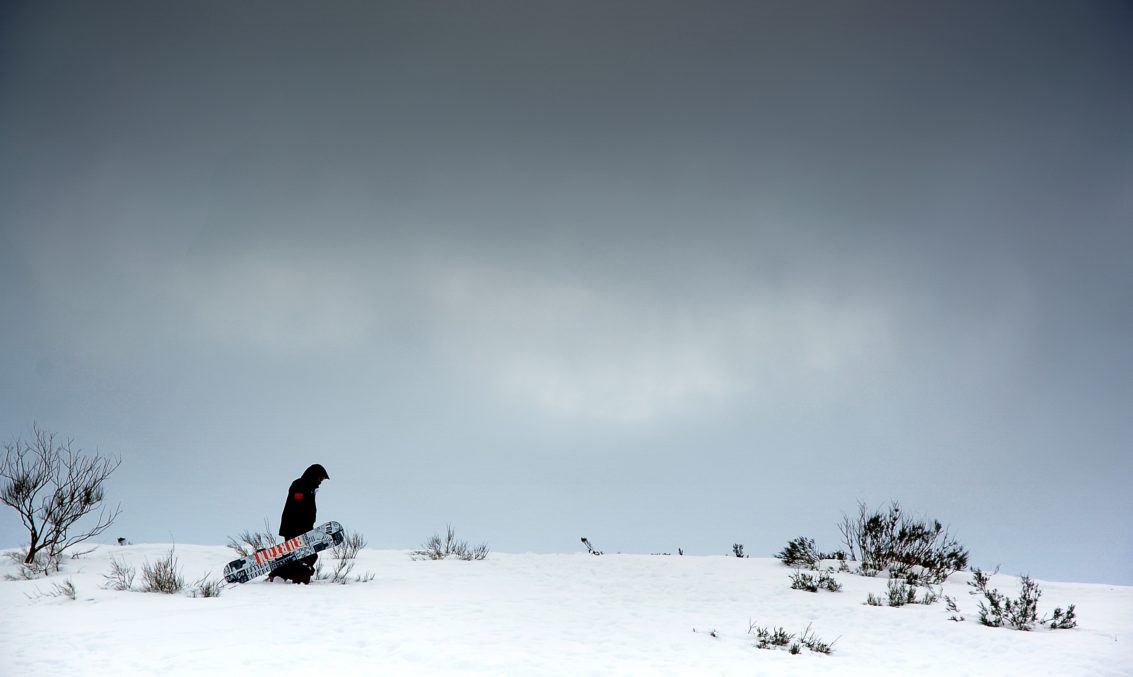


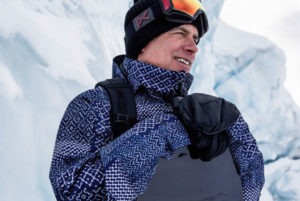

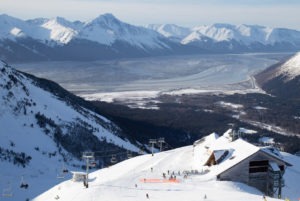
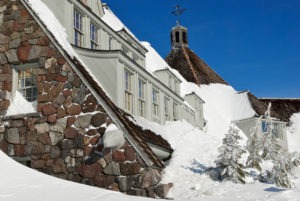
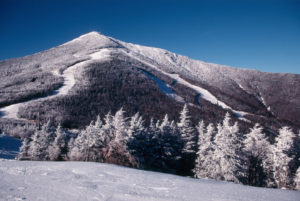
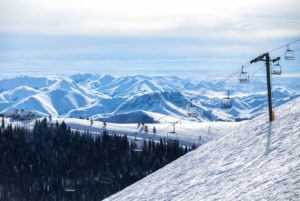
[…] when did snowboard bindings come into play? Jake Burton Carpenter added these when he started developing snowboards that were made of fiberglass in the 1970s. The […]